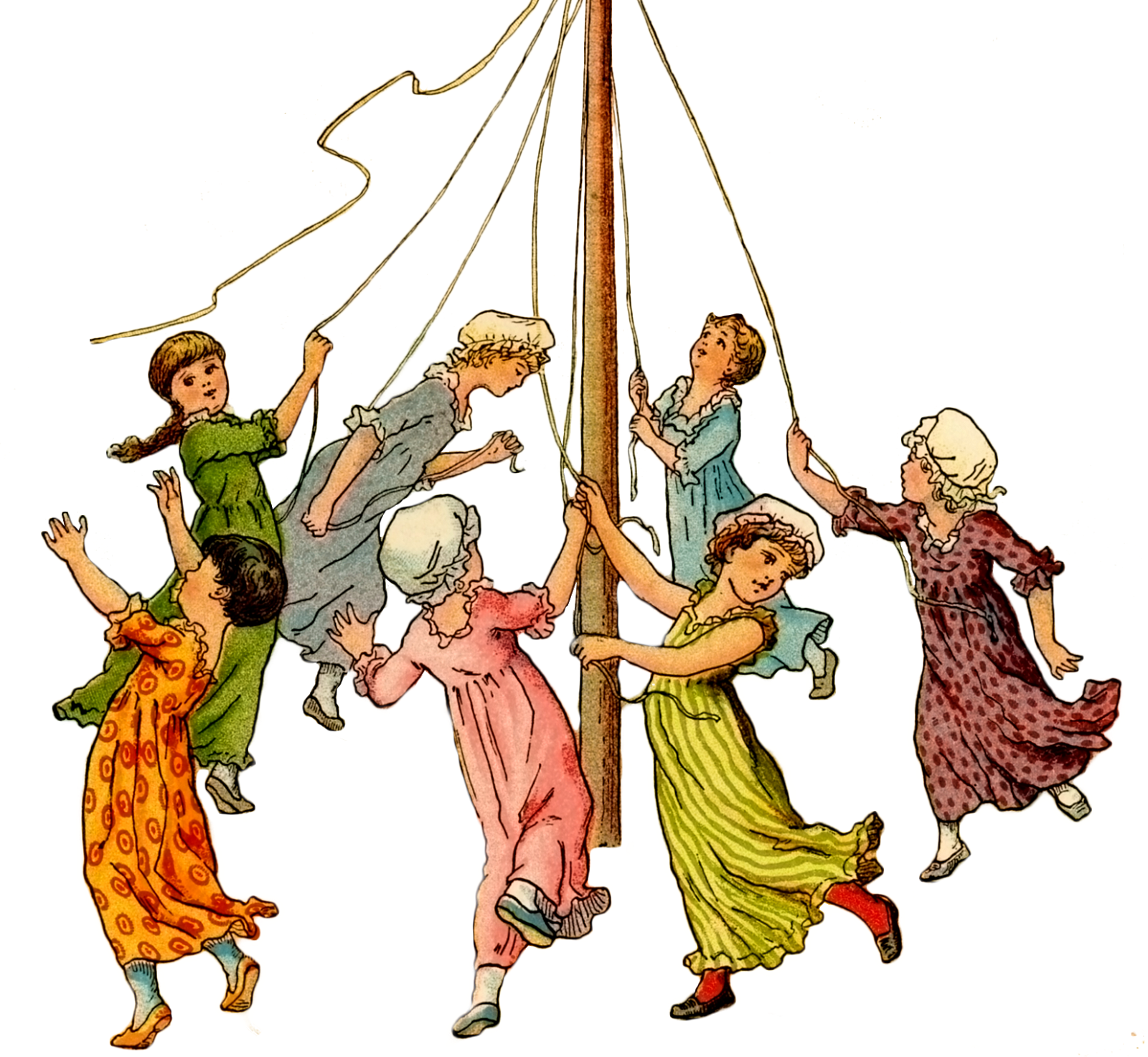 |
| Saint Walpurga source (please note: accuracy of article questionable) |
Here in Wales, the holy day of May 1st survives only as a disembodied bank holiday, floating around the days of the week depending on the calendar year. But that wasn't always the case. It used to be a night of bonfires and blessings, drinking and feasting, of ritualistic acknowledgement of the changing seasons, and a celebration to usher in the fullness of spring.
There are four seasonal festivals that have been celebrated, in some shape or form, for over 2,000 years in the west: Hallowe'en/All Souls Day and Christmas Eve/Christmas survived the test of time, but Saint Walpurgis/May Day and Midsummer's Eve/Day, for some reason, lost their potency. Their remnants are found in our cultural traditions. Midsummer's Night was fortunate to be memorialized by Shakespeare's play, but vintage pictures of maypoles and skimming literary references keep May Day buzzing in the back of our consciousnesses, like static low on the television. Even still, they are better known than the all-but-forgotten Saint Brigid's Day and Lamas Day, celebrated on February 1st and August 1st, respectively.
 |
| Ida Waugh, source |
Some of these holy days mark the middle of the seasons rather than the beginning of them. The summer and winter solstices recognize the approximate time when the lengthening or shortening of the days reverse or, as we know now, when the earth stands still and pauses before it starts to tilt in reverse direction. But the ancient Gaelic festivals were somewhere between the end of one season and the beginning of another; associated with transitions, in all their forms, as thresholds where one is neither in nor out, neither here nor there.
The difference in calendars and the reckoning of seasons is difficult to grasp; I can hardly get my bearings on them myself. I grew up with the popular seasonal groupings of spring (March, April, May), summer (June, July, August), autumn (September, October, November), and winter (December, January, February), but the ancient holy days suggest a different kind of division--especially in the remaining Catholic tradition of a the vigil, in which a new day begins at nightfall rather than sunrise. By celestial time-keeping, however, all the seasons are bumped forward about a month. By this reckoning, autumn starts in October, winter in January, etc. Look up the "first day of autumn" and "the first day of winter" in your calendar diary, and you'll see what I mean!*
 |
| neo-Pagan "wheel of the year," source |
Awareness of the season and where one is in the calendar is integral to folklore and fairy tales. Brushes with the otherworld were most likely to occur on the liminal days (equinoxes), and even Midsummer could mean trouble for maidens and wandering children. We can see how the seasonal waxing and waning, dying and awakening of the earth inspired folk traditions and daily living. The seasonal changes weren't just about the weather. They were near--and sometimes dear--realities. Just like fairy tales.
*Tolkien adapted and elaborated on the seasons and the folk traditions to engineer personalized calendars for the races populating Middle Earth--right down to the Leap Days!

Christie, this is wonderful--makes me want to light a bonfire and sit out with beers and friends and watch the spring constellations rise. I would be glad to learn loads more from you along these lines!
ReplyDeleteI'm just learning about it myself, but it's super interesting!
Delete